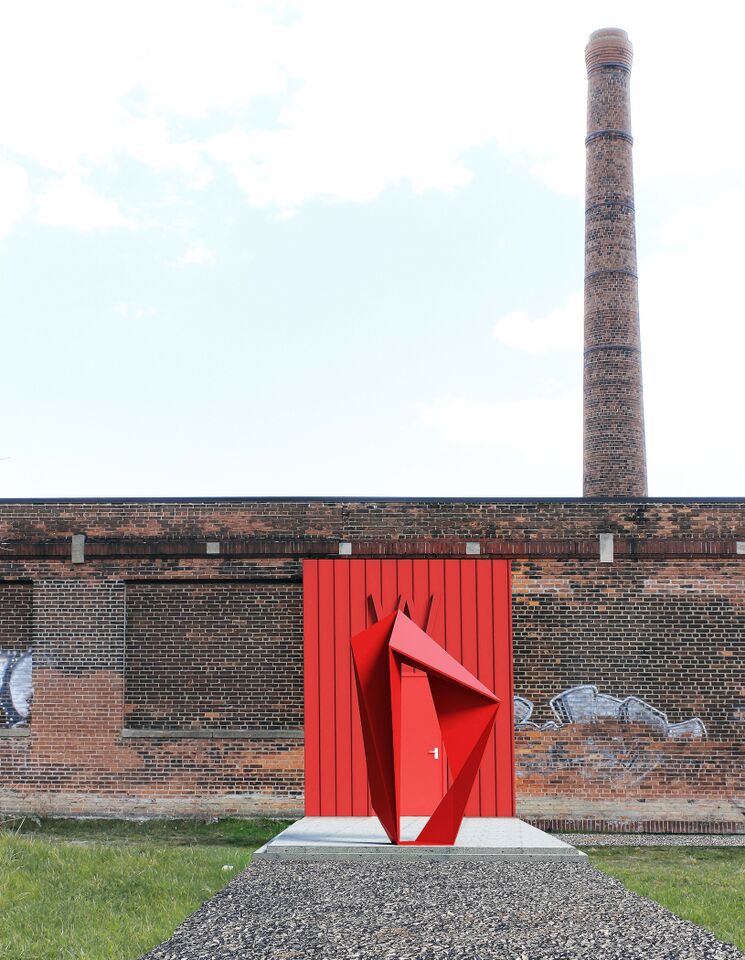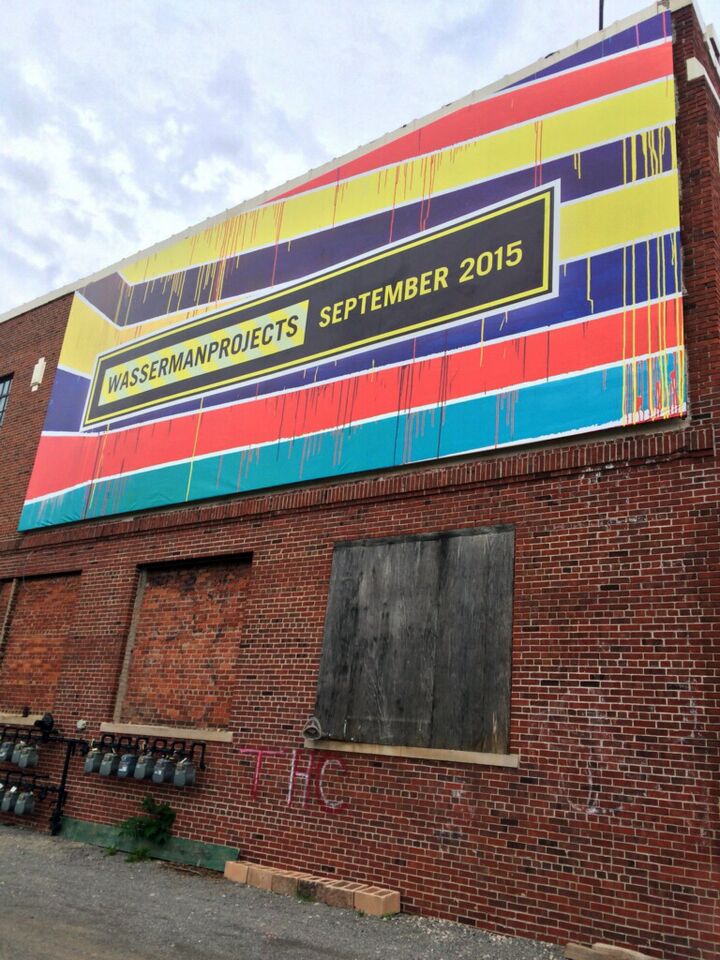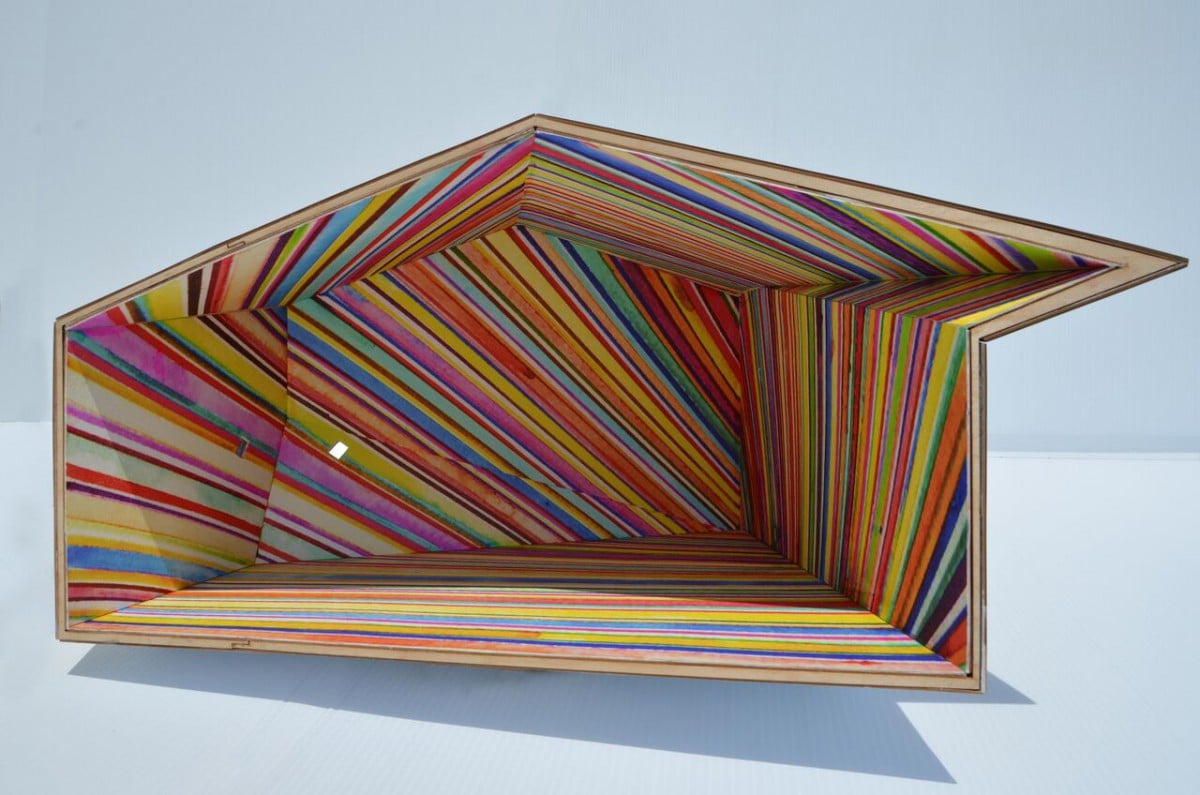Art & Exhibitions
Detroit’s Wasserman Projects Offers Chickens, Llamas, and Psychedelic Structures
The interdisciplinary art space hopes to aid in the city's revitalization.

The interdisciplinary art space hopes to aid in the city's revitalization.

Cait Munro


The building that will soon be Wasserman Projects.
Photo: Courtesy of Wasserman Projects.
Whether or not you believe New York’s art scene is doomed, cities like Detroit hold an undeniable pull for the young, creative class that often struggles to survive in America’s art capital.
After filing for bankruptcy in 2013, Detroit has risen as a new kind of city—inherently different from places like Brooklyn and Berlin, to which it is sometimes compared, but with a similar DIY ethos.
Wasserman Projects, an interdisciplinary art center slated to open in a former firehouse in Detroit’s Eastern Market neighborhood in late September, is a part of this renewal.
Founded by philanthropist, art dealer, cultural producer, and Detroit native Gary Wasserman, the 9,000-square-foot space will have an ambitious program slated to include exhibitions of work by both local and international artists, along with concerts, performances, a residency program, and a permanent installation of Belgian artist Koen Vanmechelen‘s Cosmopolitan Chicken Project, in which various “national” chickens are crossbred to create a “cosmopolitan chicken” as a symbol of global diversity.
The chickens at Wasserman Projects will be given to locals to raise until they are ready to be processed.

Wasserman Projects.
Photo: Courtesy of Wasserman Projects.
“We are not solving an urban problem, this is not meant to save the world. This is meant to be part of the fabric of what creates the urban experience,” said Wasserman during a June 25 press conference held in the Brooklyn studio of artist Markus Linnenbrink, whose site-specific installation and works on paper will help launch Wasserman Projects.
“Detroit is not having a renaissance. It’s not having a comeback. It’s not a revival. Detroit is not the first city to fail, it is simply the largest city to fail. And as such, it becomes a laboratory for how we deal with these communities where the economic underpinnings are just gone,” Wasserman said.
Linnenbrink’s installation, titled The First One is Crazy; The Second One is Nuts, is a 12-foot-tall wooden pavilion created in collaboration with Miami-based architect Nick Gelpi.
The outside consists of plain wooden panels, but inside the structure reveals the artist’s signature technicolor stripes, which create a psychedelic wonderland.

A mock-up of Marcus Linnenbrink’s technicolor pavilion.
Photo: Courtesy of Wasserman Projects.
“It’s like drowning in a painting,” Linnenbrink says. “The energy that the colors let loose in that kind of space…it’s physical.”
The outdoor space will simultaneously host Elf Waves, Earth Loops, and *Spatial Forces, a large-scale, multi-form sound installation by Detroit artist Jon Brumit, which includes a modified grain silo that responds to visitors by playing a customized soundtrack upon their arrival. The work also features a 13-part, public radio-based “sound sculpture,” which will broadcast on local radio and function as a drive-thru audio collage.
Wasserman describes the space as Detroit’s first truly mixed-use, community-driven artistic facility, but acknowledges that Galapagos, the beloved Brooklyn transplant that’s set to open in Detroit by 2016, is likely to be involved in similar kinds of ventures.
“We hope that people who come to Eastern Market to, say, buy a bushel of tomatoes will stumble in and then be like, ‘You’ve gotta see what they are doing over there! They’ve got live chickens and llamas and art!'” laughs Wasserman.
Wasserman Projects will open in Detroit’s Eastern Market neighborhood on September 24, 2015.